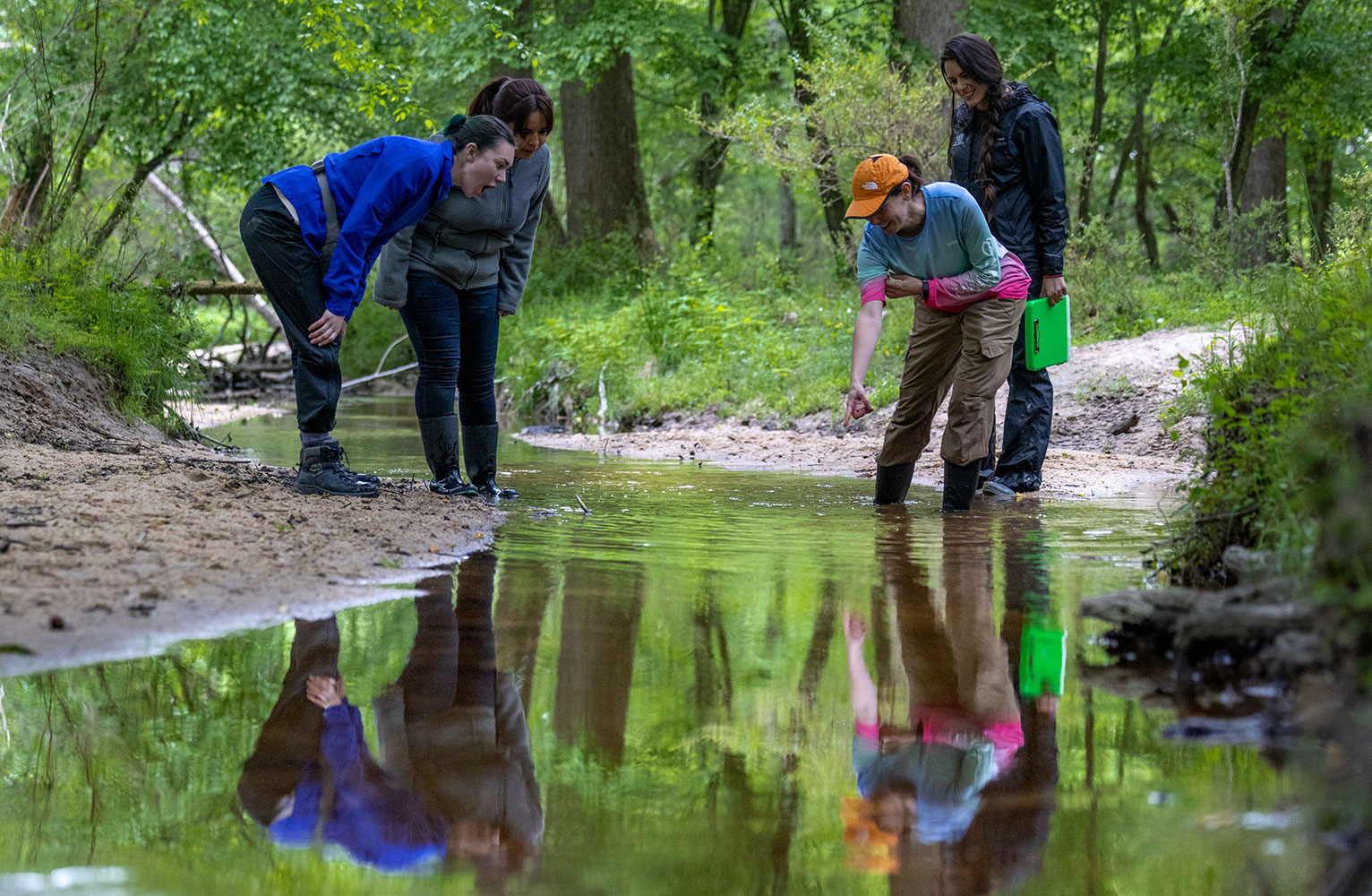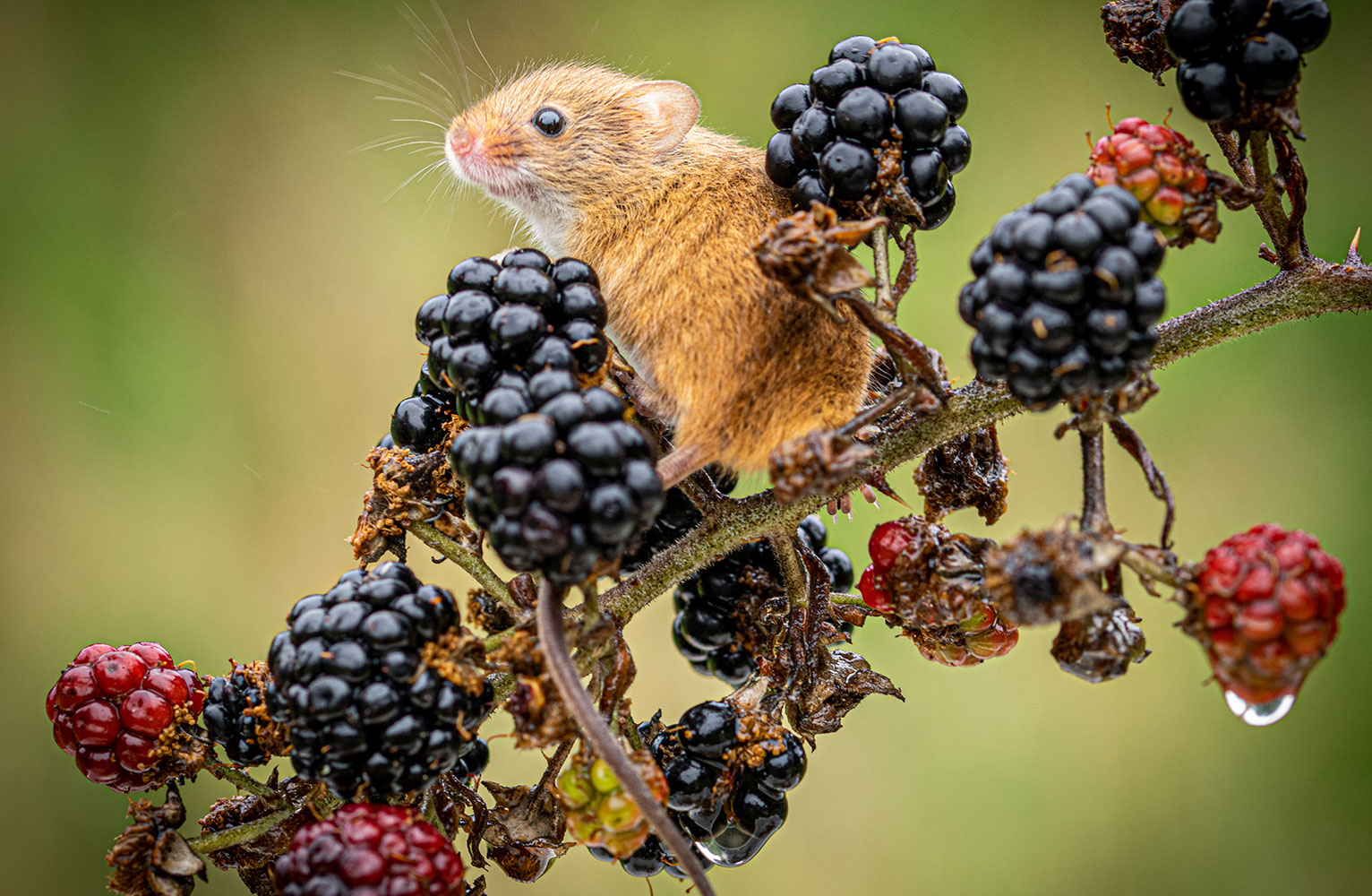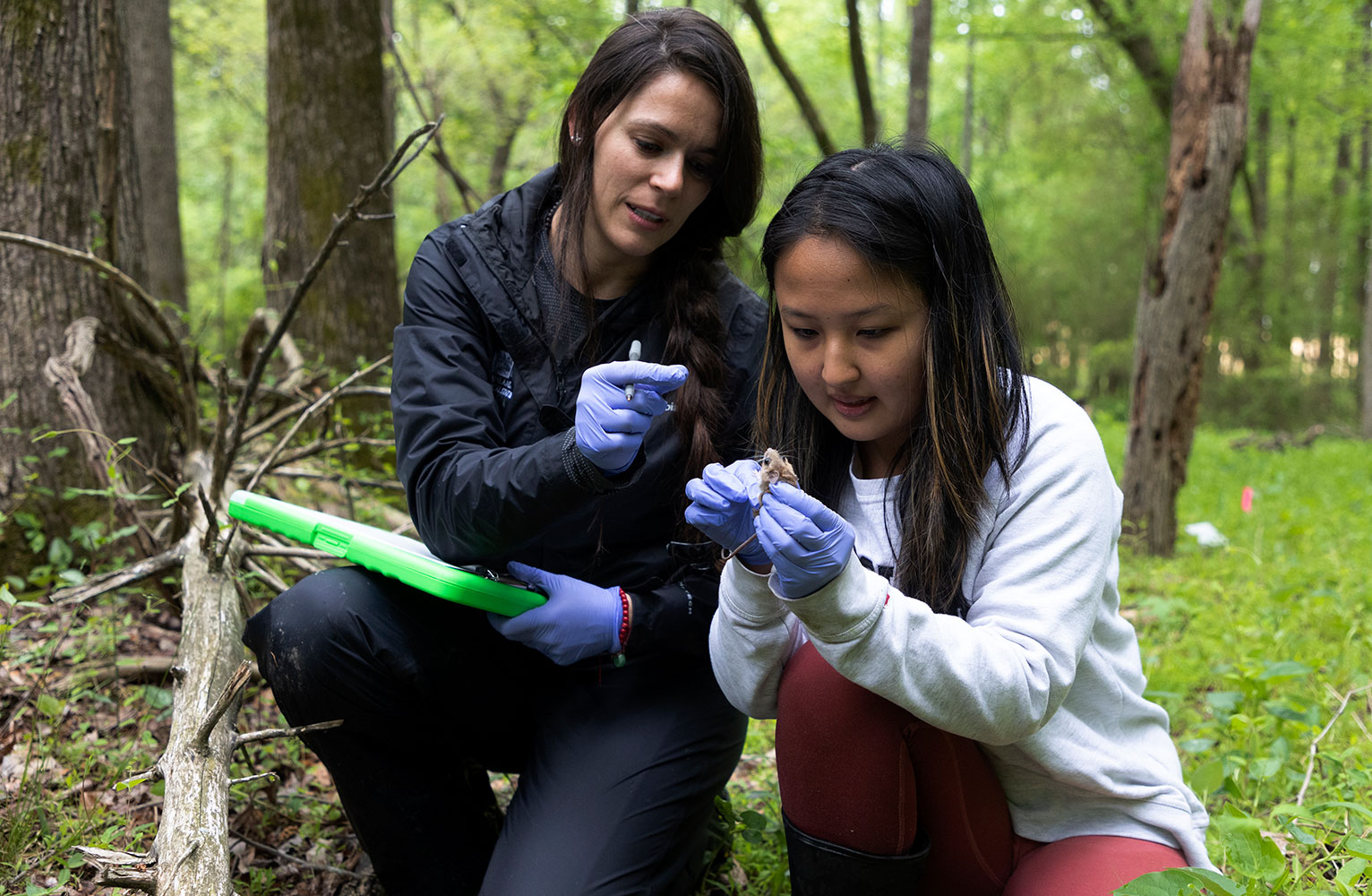
Rada Petric (standing, right) and team members look at freshwater mussels in a stream near a field site. (Photo by Andrew Russell)
By Audrey Smith ’10
UNC-Chapel Hill research assistant professor Rada Petric spends most of her days outdoors, wading through streams and exploring forests and fields, all in pursuit of monitoring the state’s native animal species and identifying areas that need conservation or ecosystem restoration efforts.
Along with a team of UNC Institute for the Environment undergraduate student researchers and partners at the NC Wildlife Resources Commission and the Greensboro Science Center, Petric is currently working to address issues along one North Carolina creek system. A construction crew will be working to restore more than three miles of North Prong Stinking Quarter in Guilford County throughout 2024. This creek system feeds into the Cape Fear River Basin and empties into Jordan Lake. Construction is already underway and will include adding curves to improve the flow of water and planting native plant species along the creek’s banks.
Helping native species thrive
The team hopes that these mitigation efforts will improve the ecosystems in the area, allowing for the establishment of healthy wetlands, improving water quality and fostering environments where more native animal species can thrive.
Once the restoration is complete the research team will monitor the impact of these changes for about seven years. The team will be paying special attention to how altering the tributary affects the presence of animal species in the area. The hope is that by improving the flow of water and adding native plants along the banks, more native animal species will thrive in the area.
“Seeing native species is indicative of the environmental health of a location,” said Petric, who is director of the Institute for the Environment’s Highlands Field Site. “A balanced ecosystem is going to be more supportive of native species and less supportive of invasive species, which throw everything off balance. Monitoring native species in restored ecosystems is necessary to assess the progress and success of the restoration efforts.”
The team will be monitoring the site for a long list of animal groups, such as small mammals like mice, rats and bats; birds; reptiles; amphibians; pollinators like bees and butterflies; and even macroinvertebrates such as freshwater mussels.
Story continues below field guide…

As the research team studies the effects of the Stinking Quarter Tributary restoration, they will be monitoring whether small animals, such as the ones in this field guide, are better able to thrive and occupy the area in greater numbers.
A FIELD GUIDE TO SMALL ANIMALS
Mitigation efforts along the creek are expected to help native animals in a number of ways, including creating gentler slopes down to the water that can be accessed by more animals and fostering wetlands that are necessary breeding sites for many birds.
“Our society needs biodiversity, native wildlife and a healthy ecosystem. Humans rely on wildlife, and if we do not provide them with a healthy environment, then we are in trouble,” said Olivia Munzer, the western piedmont habitat conservation coordinator at the NC Wildlife Resources Commission. “The purpose of projects like this is to improve a water resource that humans have degraded; and that can’t happen without providing overall biological uplift, because wildlife communities are key to a healthy ecosystem.”
Securing the creek banks and preventing erosion along the shore is a major focus of the project. Some animal species, like many varieties of mussels and fish, aren’t able to survive erosion. Erosion also pollutes the local water supply by introducing large amounts of organic material to the water. The research team will be testing the water to see what effects mitigation efforts have on water quality over time.
“Native plants and animal species have a real functional significance to our ecosystems,” said Petric. “By restoring the Stinking Quarter Tributary we can restore the original purpose of these ecosystems, which will provide an ecological uplift for both wildlife and humans in the area.”
There are many projects currently working to restore watersheds, but this one is unique in its scope and duration. The research team will be evaluating the health of the entire ecosystem, monitoring effects on a large number of animal species and monitoring water quality over many years.
“Conservation is a collaborative science that requires diverse expertise. The group dynamic that comes from this partnership of a state agency, an academic institution, and a conservation based non-profit expands our reach ten-fold,” said Lindsey Zarecky, wildlife biologist and vice president of conservation and research at the Greensboro Science Center. “Rada Petric is an invaluable resource for knowledge and experience, and a key component in the success of this study. Through her guidance this project is also a gateway for students to learn real world, hands-on conservation and ecological field work.”

Petric shows a student, Vy Pham, how to identify the gender of a mouse they caught for a restoration project. (Photo by Alyssa LaFaro)
Gaining research experience
Marie Young is one such student. She spent the fall semester of her junior year studying at the Highlands Field Site in the Blue Ridge Mountains, where Petric serves as director. She worked on a small mammal research project, and she was trained by Petric herself on how to conduct field research and properly handle the animals. Petric also suggested that Young apply for the field science technician internship that she now has at the Greensboro Science Center.
It is through this internship that Young now works on the Stinking Quarter Tributary restoration, which is also the focus of her honors thesis. Young manages the equipment at the mitigation sites, making sure everything is working properly and downloading data collected from audio recorders and video cameras so that it can be used by the team. She also leads monthly trapping excursions, setting live traps to mark and recapture animals at the site.
“Rada Petric was the first faculty member who invested in me individually. She showed me how deeply fulfilling environmental science work is, and she is the reason I’m continuing on this career path,” said Young, who is double majoring in environmental sciences and English and comparative literature with a biology minor. “I also believe that the research opportunities I’ve had at the Highlands Field Site and working closely with Rada have put me so far ahead on my career path. As I’ve begun applying for jobs after graduation, the main feedback I get is that potential employers are impressed by the amount of research experience I have and the level of responsibility I’ve already had on projects as an undergraduate.”
This project is a big undertaking and one of the most holistic mitigation projects to date, especially with its high level of monitoring for a long list of animal species. The full impact of the Stinking Quarter Tributary restoration won’t be known for years, but the breadth of data that’s collected will be valuable to future research teams as they plan conservation and mitigation efforts.
“I am thrilled to contribute to this project alongside an exceptional team, gathering comprehensive information that will greatly benefit future restoration endeavors,” said Petric.
The NC Wildlife Resources Commission and the Greensboro Science Center are funding the Stinking Quarter Tributary restoration project through several grants to the UNC Institute for the Environment.
Learn more about the Stinking Quarter Tributary restoration from PBS North Carolina.
Related Stories






